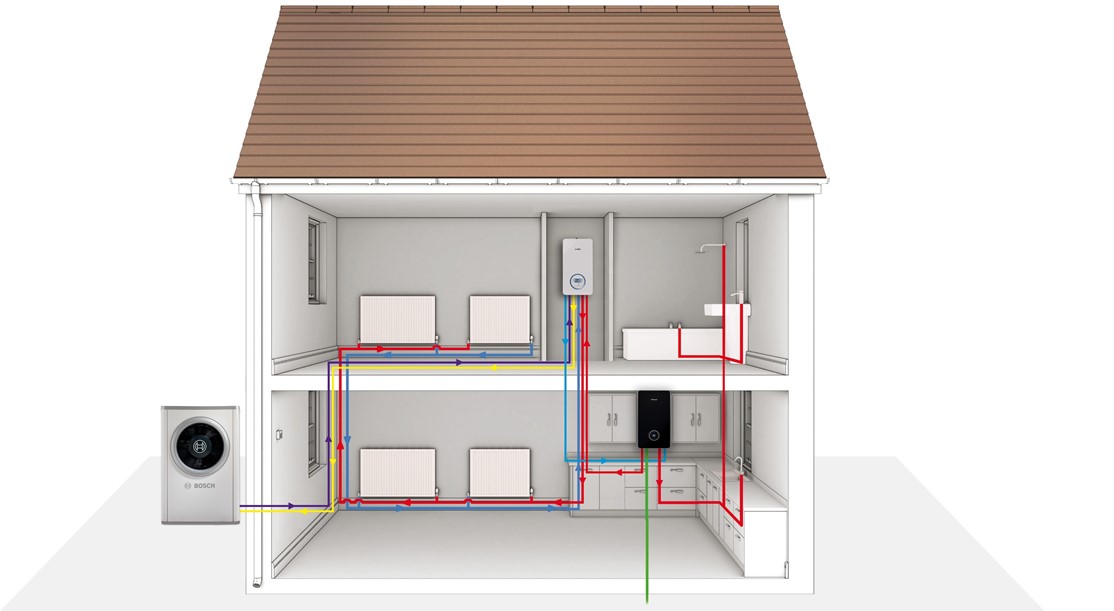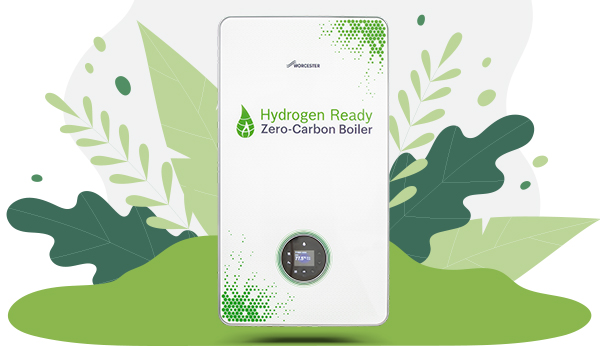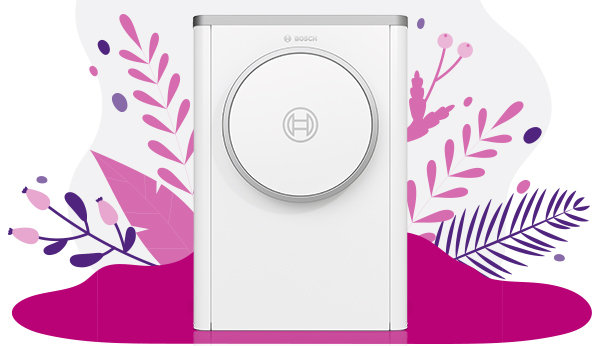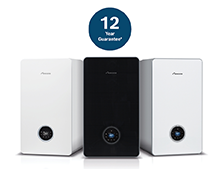What is a hybrid system?
A hybrid heating and hot water system is a combination of two or more technologies generating heat together as a low carbon alternative for home heating.
These are typically consist of a gas or oil fired boiler and an air to water heat pump.
Hybrid heat pumps can be more flexible to accommodate a wider variety of property types, making them a viable option for less thermally efficient homes, such as period properties than heat pumps alone. Generating heat for 70-80% of the time by the heat pump and during colder months the boiler acting as a back-up, giving all year-round comfort.
It is therefore cost effective and efficient to choose a heat pump with an output below the maximum heat demand of the building – this ensures that the heat pump is delivering its maximum potential.

Why fit hybrid heat pumps?
Hybrid systems are now recognised as a viable alternative to a sole gas boiler on the journey to net zero. As the technologies continues to grow, you’ll discover more opportunities to install them.
Diversifying now and supporting your customers looking to future proof their homes will open up new opportunities for you.
There are a number of benefits for your customers too for installing a hybrid system, these include:
- Offers optimised running costs using either the boiler, the heat pump or both
- Reduced installation size required compared to a sole heat pump installation
- No need for hot water storage with a combi boiler
- Reduced appliance cost when adding the hybrid heat pump to an existing system
- No system changes when retrofitting into existing heating systems with limited remedial works required to the property’s fabric, piping and radiators
- More familiarity for your customers making their journey into new technology types
- Futureproofs properties, when installed with our boilers that are able to run on a hydrogen blend they may be converted to hydrogen gas in the future. This also re-assures customers that gas boilers will not be banned from 2025, meaning it’ll be running until the end of its life
- Allows your customers to improve the fabric of their property over a longer period whilst delivering carbon savings immediately
Installation time
The most typical configuration of a hybrid heat pump will likely be a combination of a gas boiler and heat pump.
On average a hybrid system can take 2 to 5 days to install, depending on the complexity of the system and what the technology configuration is. To compare that to a sole heat pump installation it is significantly reduced.
How does the control of a hybrid system work?
There are quite a few different controls, from a quite basic control that simply allows the heat pump to heat the system whilst the external air temperature is higher than 7ºC, to a control that takes into consideration the cost of the fuels, the amount of over or under generation of grid electricity and numerous other factors.
A typical system will have either
- An internal room temperature controller and an external weather sensor
- Or an internal room temperature controller that accesses the external temperature via the internet.
Training required
We would recommend you book onto our heat pump and hybrid training course in the first instance.
Guarantees
If you are MCS accredited you can offer up to a 7 year guarantee*.
Other guarantee lengths are available, for example with product training. Please sign up or log in to your Excelerate account to view a full breakdown of our guarantees.
FAQ's
What are the advantages and disadvantages of a hybrid system?
Most existing heating systems which are heated by a gas or oil-fired boiler, (circa 24m), have radiators installed that were sized on the basis that the water temperature within was around 75ºC and an external air temperature of -3ºC. They were also sized on the basis that the boiler would be operated intermittently, perhaps for one or two hours in the morning and 4 or 5 hours at night. Outside of these times, the heating system would be switched off with a small number of systems having controls that allowed the air temperature in the house to drop to a set-back temperature 4 or 5ºC lower than the comfort temperature (which is typically 21-22ºC). If the setback temperature is reached then the boiler will fire and keep the house at this set-back temperature until the next demand for the higher comfort temperature.
Consequently, there are many occasions where only putting air-source heat pump water temperatures, (40-45ºC) into radiators sized for temperatures more like 75ºC will result in lower room air temperatures being experienced and discomfort and perhaps secondary heating devices needing to be used with more carbon being emitted.
Conversely, there will be moments in the year when the outside air temperature is higher than the design temperature basis and the required room temperatures will be achieved by the lower fl ow temperatures of a heat pump, with no noticeable drop in heat pump efficiency. Typically with anything over around 7ºC external air temperatures, it is likely that the heat pump will be suitable for the existing radiators to achieve the desired room temperatures and therefore with the lowering carbon intensity of electricity generation, a worthy consideration for carbon reduction measures.
A major advantage of a hybrid system is the reduced alterations needed to an existing heating and hot water system and the property itself. To substitute a gas or oil-fi red boiler totally with a heat pump is likely to require improvements to the fabric of the house to reduce the heat loss and also make the existing radiators and pipework suitably sized for the lower water temperatures. Also and perhaps more significantly there are around 17 million homes with combi or combination boilers installed and therefore no hot water storage cylinder. To remove a combi and replace it with a heat pump would require a hot water storage cylinder to be installed and a location for it found, and in most cases this will mean taking a portion of the landing or one of the bedrooms and constructional work to facilitate this. As you can imagine there will be very few people happy to accept this requirement.
Using a hybrid heat pump system would allow the heat pump to be sited externally and no or very few remedial changes are required to the heating and hot water system or the property. The boiler would heat the house during the colder periods and, when the weather isn’t quite so cold, yet heating is still required, a combi can provide hot water whilst the heat pump warms the property.
How much does it cost to install a hybrid?
The cost of a hybrid heat pump installation will vary significantly on a number of factors;
- Is the installation both a new boiler and a new heat pump?
- If the existing boiler is retained and it’s just a heat pump that is the new addition
- The proximity between the heat pump and the boiler
- Is the hybrid system going to be with a Regular boiler system or a combi boiler system
- Is the heat pump a split or monoblock
Generally, a heat pump of around 6kW output is the size of the majority of hybrid installations and can therefore provide the heating requirements for around 70% of the time. The heat pump, excluding installation cost, would be around £4k and a boiler, such as a 30kW gas-fi red combi, would be around £1k. The controls and installation will again vary from site to site but the installation of the component parts onto an existing system, with labour and other materials, could be anything up to and around £8k-£10k.

Decarbonisation Hub
Learn more about Decarbonisation and the various technologies available. For further insight download our 'Fuelling the future' Whitepaper.

Hydrogen
A hydrogen-ready boiler is a gas-fired heating boiler which is capable of burning either natural gas or pure (100%) hydrogen.

Heat Pumps
A heat pump is a relatively new technology in the UK although they are widely used in Scandinavia and many parts of Europe where there is an abundance of renewably sourced electricity.




